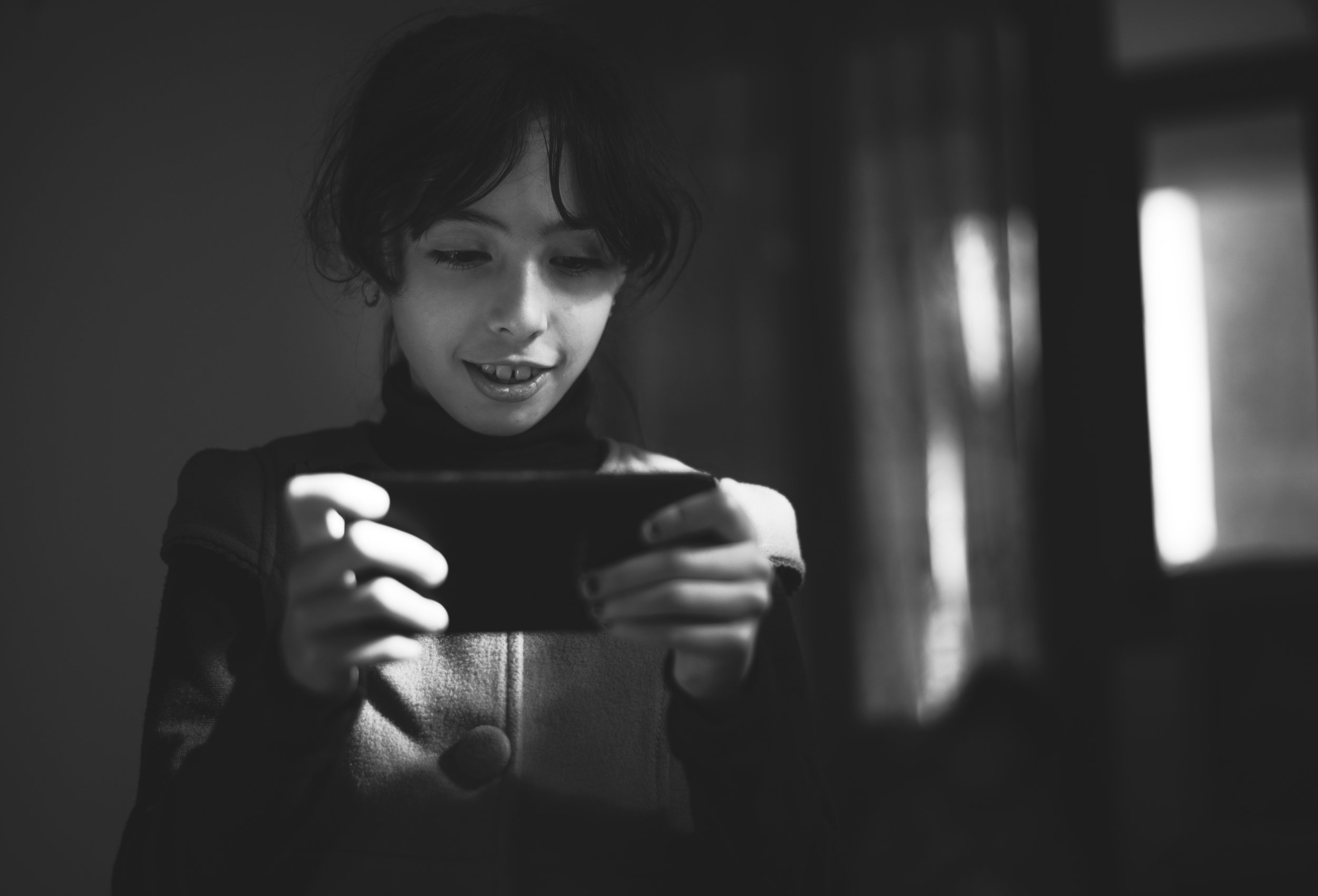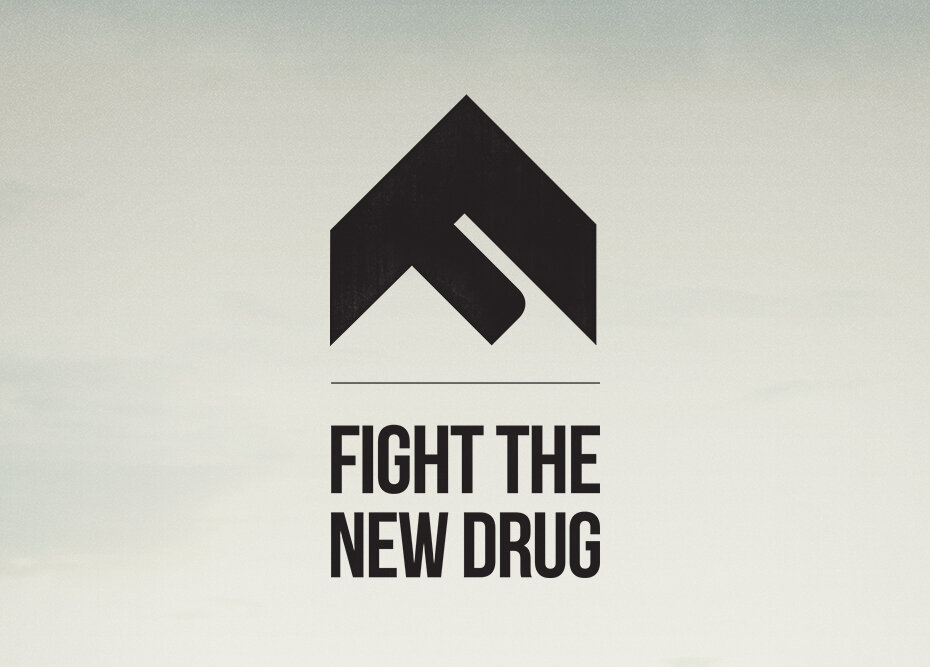Some of the greatest weapons to combat the normalization of porn in your home and society are education and awareness—and that includes face-to-face conversations that are open, honest, shame-free, and ongoing.
Research is showing how porn can really harm the consumer, their relationships, and the world. Fight the New Drug is all about getting these facts into the light and equipping people to make educated decisions about watching porn. For some young consumers, it’s not a conscious decision to watch porn because they stumble upon it or happen upon it by accident. This is how a lot of kids get exposed and potentially end up struggling with pornographic material by age 12 or younger.
And this is usually how a prolonged struggle starts.
Working toward the ideal
Kids are curious about sex. Spoiler alert: this is normal and healthy. What’s not healthy: going to porn for all the answers. In an ideal situation, a child would feel free to tell their parents about what they heard on the playground or found on the computer by accident. Often, they can be too scared to say anything, and the issue won’t be brought up.
We think it’s important for parents to talk to their kids about what porn is before they see it for the first time and keep the conversation open, shame-free, honest, and loving. Instilling a total fear of porn in a young child may work for a short while, but it’s not a long-term help to keeping the lines of communication open. If kids feel their parents are open to listening to their struggles or questions, they’ll be more likely to approach the subject whenever it comes up instead of hiding their curiosity and searching for it on their own.
And to help curious minds from looking for answers in the wrong places, Fight the New Drug recommends tech-based solutions for anyone who needs help with web monitoring. This is why we highly recommend checking out our friends at Bark—an easy-to-use, smart tool that parents can use to help protect their children online. Bark uses a highly advanced algorithm to alert parents when it detects porn site visitation as well as potential threats or signs of danger, such as:
But back to conversations. While filters and monitoring devices are great ways to keep tabs on internet use, there’s no replacement for honest, heart-to-heart conversations between a parent and their child about the harms of porn that leaves shame at the door.
But how do these conversations start, and how do they continue? After doing hundreds of presentations around the country, and receiving thousands of emails from teens all around the world, Fight the New Drug has taken that feedback, combined it with research, and produced resources on our blog that can help you navigate these conversations.
We’ve also created this interactive and personalizable resource to walk parents, friends, partners, kids, strangers— pretty much anyone really,—step-by-step through having a conversation about porn. Check it out by clicking below:
https://fightthenewdrug.org/lets-talk-about-porn/
How to have a conversation
Honestly, parents—elementary-aged kids and teens in the world today are facing issues that you and your parents never even imagined when you were growing up. When a lot of today’s parents were young, if anyone wanted porn, they had to look pretty hard in order to get their hands on it. They’d go to the local store and have to show their ID and actually ask a store clerk for that magazine. Fast forward a few years, and today’s children can consume limitless amounts of it with one click of a mouse. It’s increasingly more hardcore and increasingly more available than ever.
So if you currently have teenagers, are about to have teenagers, plan on having teenagers someday, or just want to help youth in general, reading our resources will provide you with powerful tools and insights for dealing with pornography in today’s world.
We also recommend the book “Good Pictures, Bad Pictures,” for younger children especially.
A GUIDE TO “LET’S TALK ABOUT PORN”
As a parent, it can be difficult, at times, to tap into your child’s world and have a heartfelt conversation on topics that really matter and will make a difference in their life.
Here is our suggestion on how to talk about pornography. So often, we hear parents say, “Not my kid!” and, “My kid doesn’t have access to that stuff. They don’t have a cell phone, and I monitor their internet use… Even if they did have access, they wouldn’t look at it.” That may be true, and we hope it is. However, statistically speaking, it’s pretty unlikely. If they aren’t looking at porn on their own devices, there are always friends or classmates who are too eager to share.
More than 90% of all teenagers ages 12 to 17 have been exposed to hardcore pornography, and once they’ve been exposed, many keep coming back. It’s no longer a question of if your child will be exposed to pornographic material online, but when. It’s up to parents to instill their family values backed by research into their child’s mindset.
This is why we’ve created “Let’s Talk About Porn,” an interactive website that can help you have a conversation about porn with virtually anyone—including your kids.
WHY HAVE THE CONVERSATION
You need to be aware that it is likely that the pornography industry is targeting your child through online games, advertisements, email spam campaigns, pop-ups, merchandise, and so much more. Unfortunately, if you don’t educate your kids about what healthy sexuality looks like, the porn industry will. And you probably won’t like what they teach them.
WHEN TO START THE CONVERSATION
The short answer: earlier than you think.
If you have young children and are wondering at what age it is appropriate to start the conversation about the dangers of pornography, understand
that it varies depending on specific cultural circumstances, societal influences, media exposure, and individual curiosities. However, children are being exposed to pornography at an increasingly younger age. You may need to start talking about it sooner than you had originally planned if you want to lay the foundation before they’re exposed.
If your child is older, the time may be now.
HOW TO START THE CONVERSATION
The days when parents could quickly have a brief, one-time “talk” about the birds and the bees are over. Today, children are repeatedly exposed to increasingly explicit sexual content, requiring parents to have multiple open and direct conversations about the differences between healthy sexuality and its cheap, unhealthy imitations. There may be some awkwardness at the beginning, but as you make it a regular discussion, it will get easier.
Porn isn’t going away, but we can still fight.
With constantly evolving technology, starting conversations about the harms of porn and the joys of real love and healthy sexuality is so important.
Porn isn’t going away, so it’s up to us to raise awareness of its harms and get educated on the issue. Nothing can completely erase its existence in our technological world, but with an open, shame-free dialogue and a scientifically-backed perspective, parents of the Playboy generation can help their kids of the PornTube generation navigate the online minefield they walk through daily.


